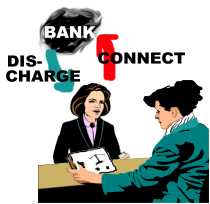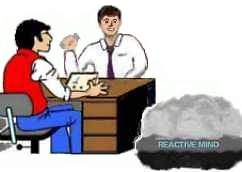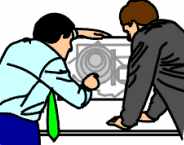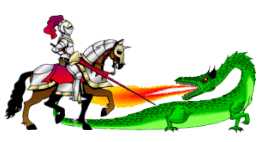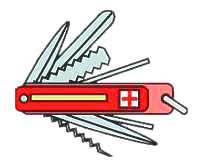|

(This is often called PTS C/S
Instruction No One as it is the first thing to do before the actual handling of any PTS
situation).
AFFINITY
Degree of liking or affection or lack of it. Affinity is a
tolerance of distance. A great affinity would be a tolerance of or liking of
close proximity. A lack of affinity would be an intolerance of or dislike of
close proximity. Affinity is one of the components of understanding; the other
components being reality and communication.
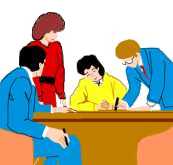
REALITY
The degree of agreement reached by two ends of a
communication line. In essence, it is the degree of duplication achieved between
cause and effect. That which is real is real simply because it is agreed upon,
and for no other reason.

COMMUNICATION
"The interchange of ideas or objects between two people or
terminals. More precisely the definition of communication is the consideration
and action of impelling an impulse or particle from source point across a
distance to receipt point, with the intention of bringing into being at the
receipt point a duplication and understanding of that which emanated from the
source point. "The formula of communication is: Cause, Distance, Effect,
with Intention, Attention and Duplication with Understanding." "Communication
by definition does not need to be two-way. Communication is one of the component
parts of understanding."
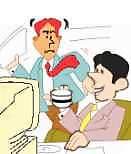
ARC BREAK
A sudden drop or cutting of one's affinity, reality, or
communication with someone or something. Upsets with people or things come about
because of a lessening or cut off of affinity, reality, communication or
understanding. It's called an ARC break instead of an upset, because, if one
discovers which of the three points of understanding have been cut, one can
bring about a rapid recovery in the person's state of mind. It is pronounced
by its letters A-R-C break.

PROBLEM
Anything which has opposing sides of equal force; especially
postulate-counter-postulate, intention-counter-intention or idea-counter-idea;
and intention-counter-intention that worries the preclear.

OVERT
1. An aggressive or destructive act by the individual
against one or more of the eight dynamics (self, family, group, mankind,
animals or plants, mest, life or the infinite).
2. That thing which you do which you aren't willing to
have happen to you.

WITHHOLD
An undisclosed harmful (contra-survival) act.
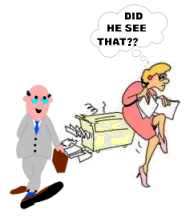
MISSED WITHHOLD
An undisclosed contra-survival act which has been
restimulated by another but not disclosed. This is a withhold which another
person nearly found out about, leaving the person with the withhold in a state
of wondering whether his hidden deed is known or not.
 |
 |
|
"Mind over Matter" or causative
thinking
can change the present and future. It even
has a profound impact on the effects of past
on the present as we can see in auditing. |
POSTULATE
1. To conclude, decide or resolve a problem or to set a
pattern for the future or to nullify a pattern of the past. (Example: New
years resolutions).
2. That self-determined thought which starts, stops or
changes past, present or future efforts.
3. In ST the word postulate means to cause a
thinkingness or consideration. It is a technical definition and is defined
as causative thinkingness.
COUNTER-
1. (Prefix) Opposition, as in direction or purpose; for example
counter-proposal, counter-act.
HOSTILE
1. Characteristics of an enemy.
2. Feeling or showing characteristics of an enemy; antagonistic.
ANTAGONISM
1. Mutual resistance; opposition; hostility.
2. The condition of being an opposing force, factor or principle.
 |
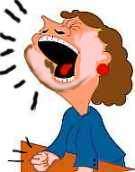 |
|
Antagonistic terminals (AT's) to some pc's
look like their family album with a
dominating spouse or parent on top of the list.
List "usually includes father, mother,
wife or
wives, husband, brothers, sisters, aunts, uncles,
grandparents, lovers". ( Quote from PTS RD). |
ANTAGONISTIC TERMINAL.
1. A person or group opposed to the pc or what the pc is doing. This can be due
to a number of factors. Misunderstandings, cross-purposes, hate, opposite
convictions, but can also include situations where the pc is actually provoking
the person in some way to antagonize him. Such a terminal could be called a
Suppressive Person but this term is very loaded and often inaccurate and
problematic. Often pc's will have one of their parents as their Antagonistic
Terminal. The parent is usually well-intended but the relationship has gone bad.
Since we are handling the pc and not the Antagonistic Terminal there is no need
to pass judgment on his state of case or basic motivations. The pc can go PTS to
an Antagonistic Terminal and it would be handled with standard PTS tech.
2. A possible Suppressive Person, but his state of case and motivations not
determined.
3. A person or group antagonistic to the pc, but with no real thought of
"doing the pc in", "weave a web" or any such thing. He is
simply opposed to the pc and fighting him in some way. Such a terminal on the
pc's case is best dealt with using PTS tech.
4. An AT is simply a person or group that, to be correctly handled on the
case, has to be addressed with PTS tech. Antagonistic terminals (AT's) to some pc's
look like their family album with a dominating spouse or parent on top of the list.
List "usually includes father, mother,
wife or wives, husband, brothers, sisters, aunts, uncles, grandparents,
lovers". ( Quote from PTS RD).
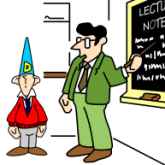 |
Discipline and Punishment are not
necessarily Suppression. It is of course
an attempt to suppress bad behavior.
True suppression does the least good to
the dynamics - only to protect the
suppressor's imagined interests. |
SUPPRESS
1. To squash, to sit on, to make smaller, to refuse to
let reach, to make uncertain about his reaching, to render or lessen in any
way possible by any means possible. To the harm of the individual and for
the fancied protection of a suppressor.
 |
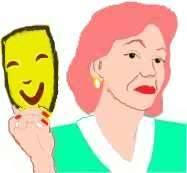 |
|
Suppression can be done by overwhelming
force or covertly. In both cases it is hard to
fight back. The intent - more than the actual
action - is what really determines it. |
SUPPRESSION
1. Suppression is "a harmful intention or action
against which one cannot fight back." Thus when one can do anything about
it, it is less suppressive.

SUPPRESSIVE PERSON
1. A person with certain behavior characteristics and who
suppresses other people in his vicinity and those other people when he
suppresses them become PTS or potential trouble sources.
2. A person who has had a counter-postulate to the pc you
are handling (see Antagonistic Terminal).

SUPPRESSIVE GROUPS
1. A group acting as an AT on the pc's case.
2. Are defined as those which seek to destroy Scn
or which specialize in injuring or killing persons or damaging their cases
or which advocate suppression of mankind.
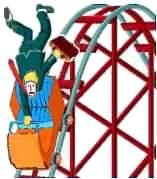
ROLLER-COASTER
1. A case that betters and worsens. A roller-coaster is
always connected to a suppressive person and will not get steady gains until
the suppressive is found on the case or the basic suppressive person
earlier. Because the case doesn't get well he or she is a potential
trouble source to us, to others and to himself.
2. Case gets better, gets worse, gets better, gets worse.
POTENTIAL TROUBLE SOURCE
1. Somebody who is connected with an SP who is
invalidating him, his beingness, his processing, his life, or even his
group. It is a technical thing. It results in illness and
roller-coaster and is the cause of illness and roller-coaster.
2. The PTS guy is fairly obvious. He's here, he's way
up today and he's way down tomorrow and he gets a beautiful session and
then he gets terribly ill. That's the history of his life.
3. The mechanism of PTS is environmental menace that
keeps something continually keyed-in. This can be a constant recurring
somatic or continual, recurring pressure or a mass. The menace in the
environment is not imaginary in such extreme cases. The action can be taken
to key it out. But if the environmental menace is actual and persists it
will just key-in again. This gives recurring pressure unrelieved by usual
processing.
 |
Search & Discovery is a
precision process to locate an
SP on the case. An SP using
covert means can be almost
impossible for the PC to detect. |
SEARCH AND DISCOVERY
1. Search and discovery of suppression is called an "S
and D." It locates the suppressive on the case.
"Remember that the real suppressive person (SP) was the
one that wove a dangerous environment around the pc. To find that person is
to open up the pc's present time perception or space. It's like pulling
a wrapping of wool off the pc.
"The SP persuaded or caused the pc to believe the
environment was dangerous and that it was always dangerous and so
made the pc pull in and occupy less space and reach less.
"When the SP is really located and indicated the pc
feels this impulse not to reach diminish and so his space opens up.
"The difference between a safe environment and a
dangerous environment is only, that a person is willing to reach and
expand in a safe environment and reaches less and contracts in a dangerous
environment.
"An SP wants the other person to reach less. Sometimes
this is done by forcing the person to reach into danger and get hurt so that
the person will thereafter reach less.
"The SP wants smaller, less powerful beings. The SP
thinks that if another became powerful that one would attack the SP.
"The SP is totally insecure and is battling constantly
in covert ways to make others less powerful and less able."
|


